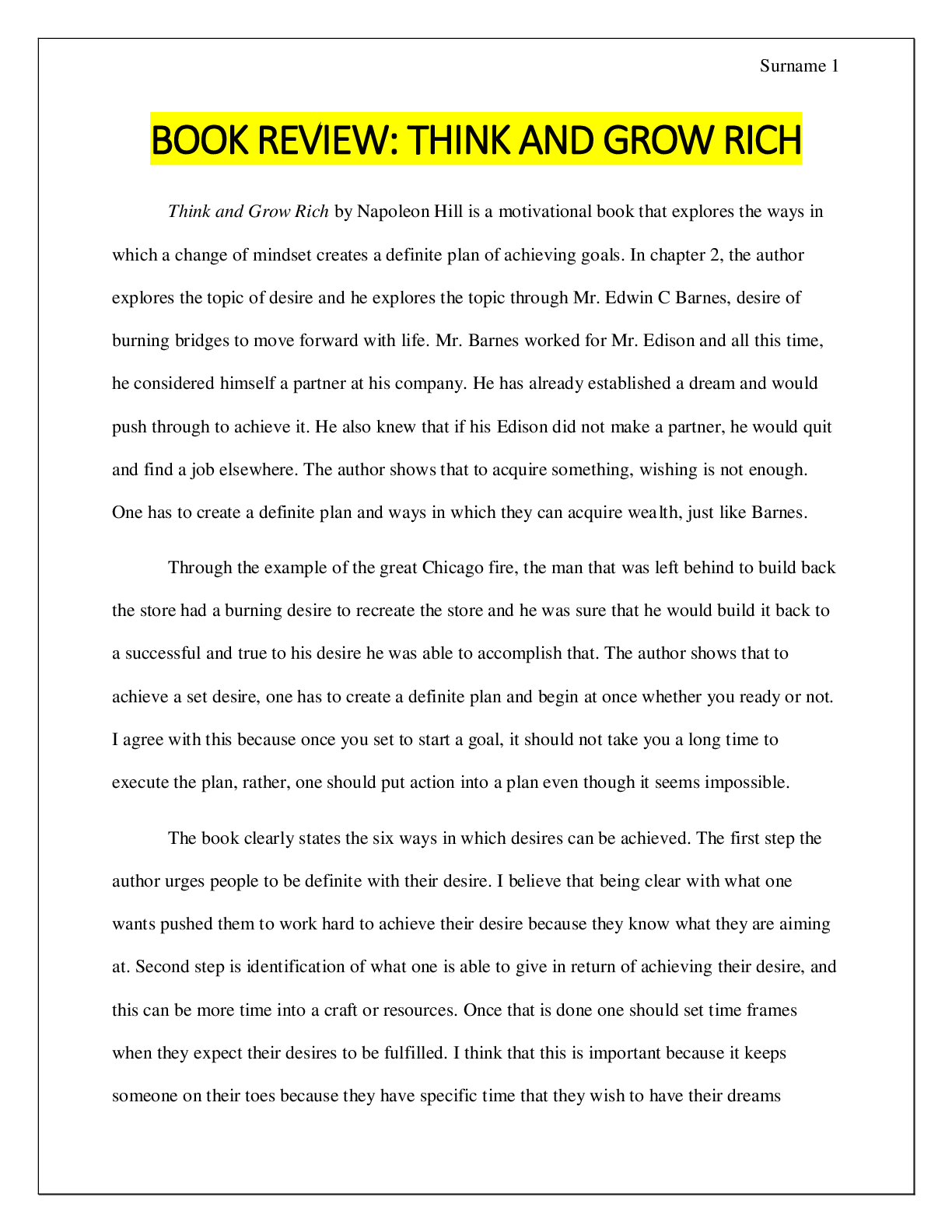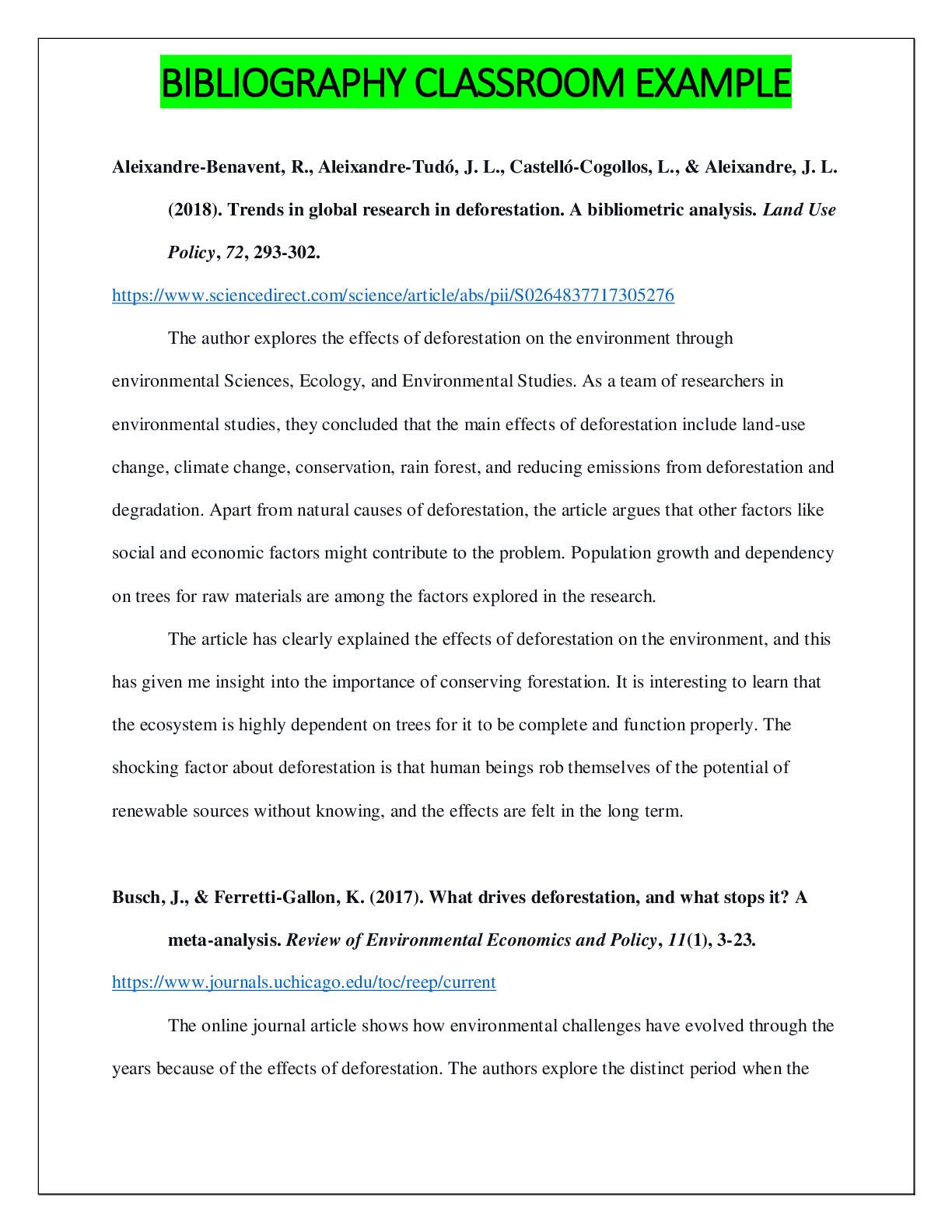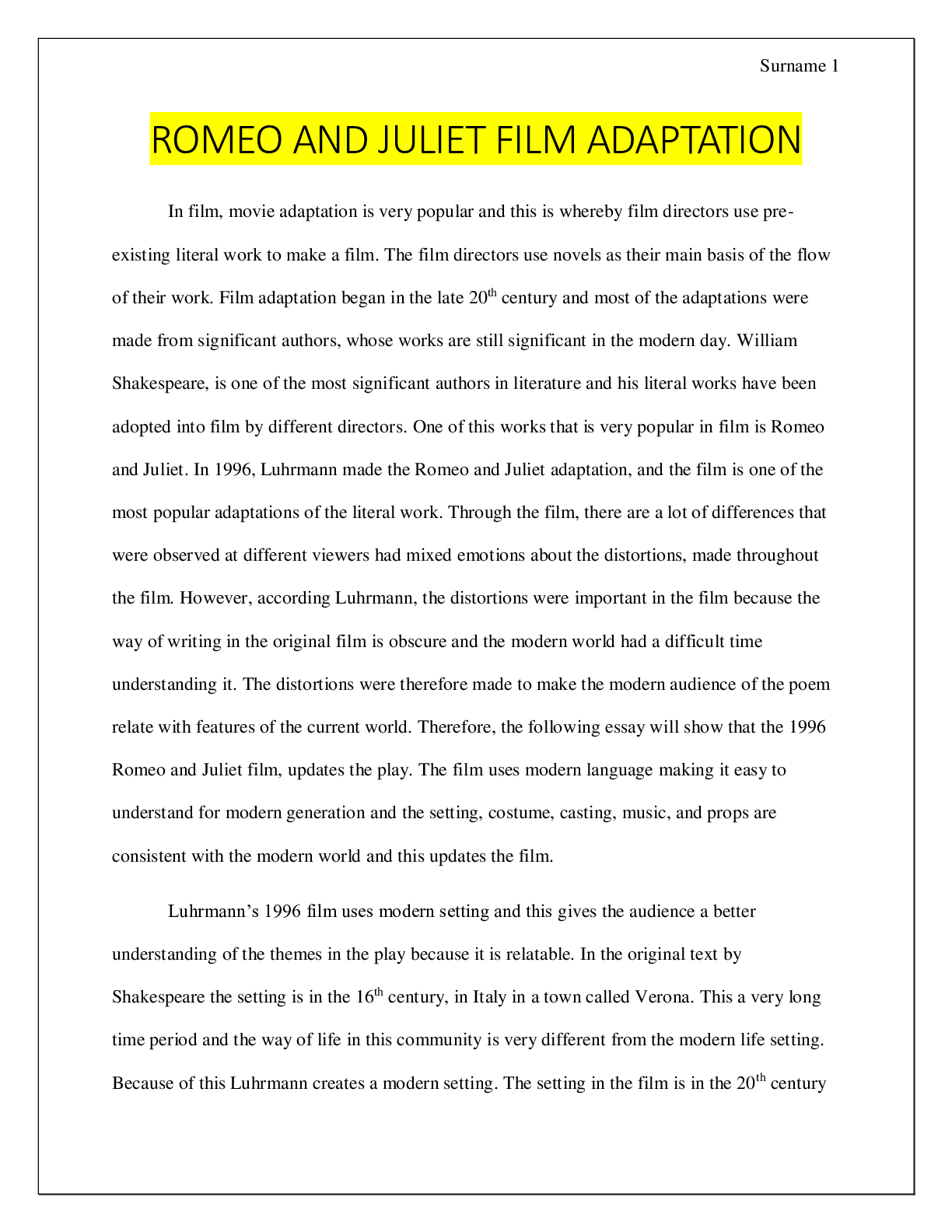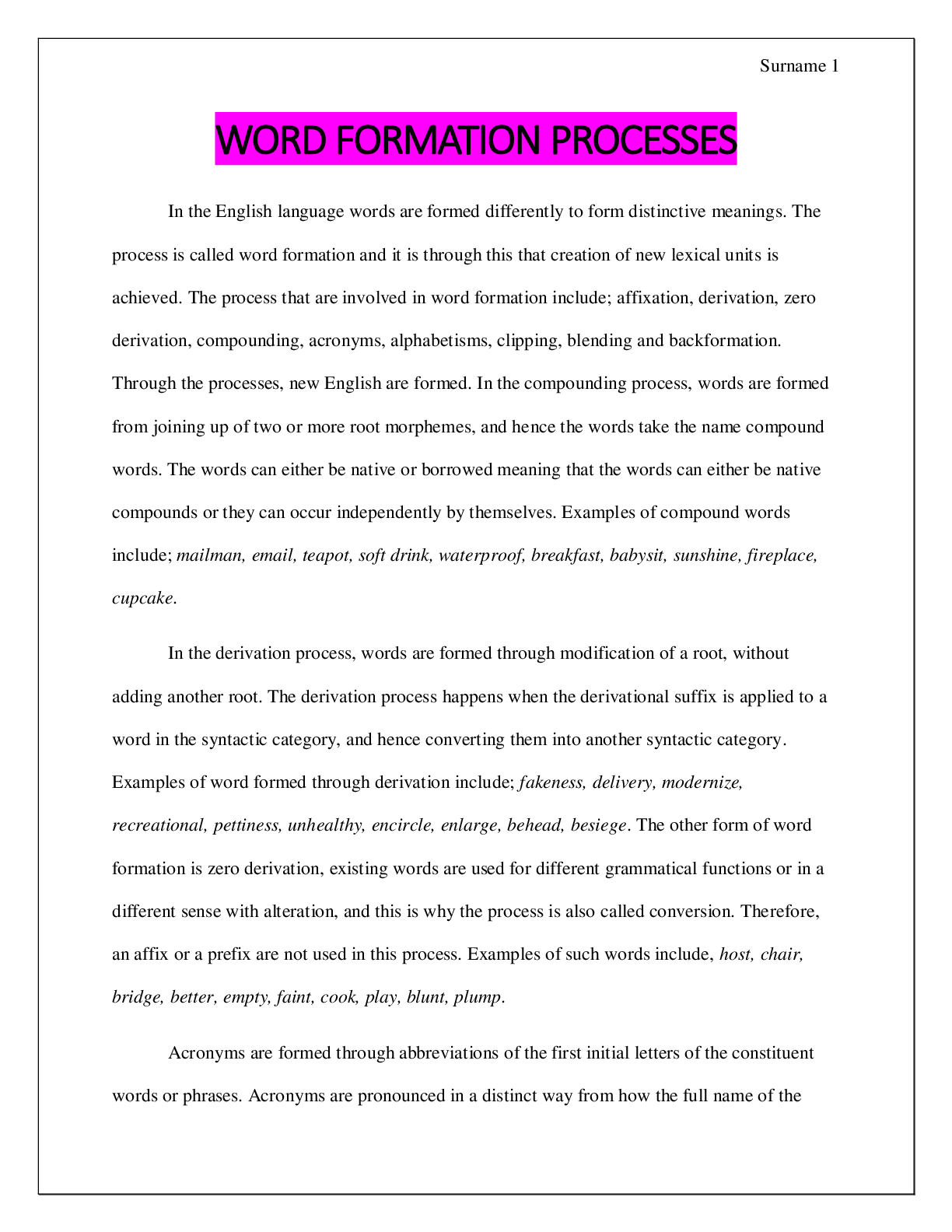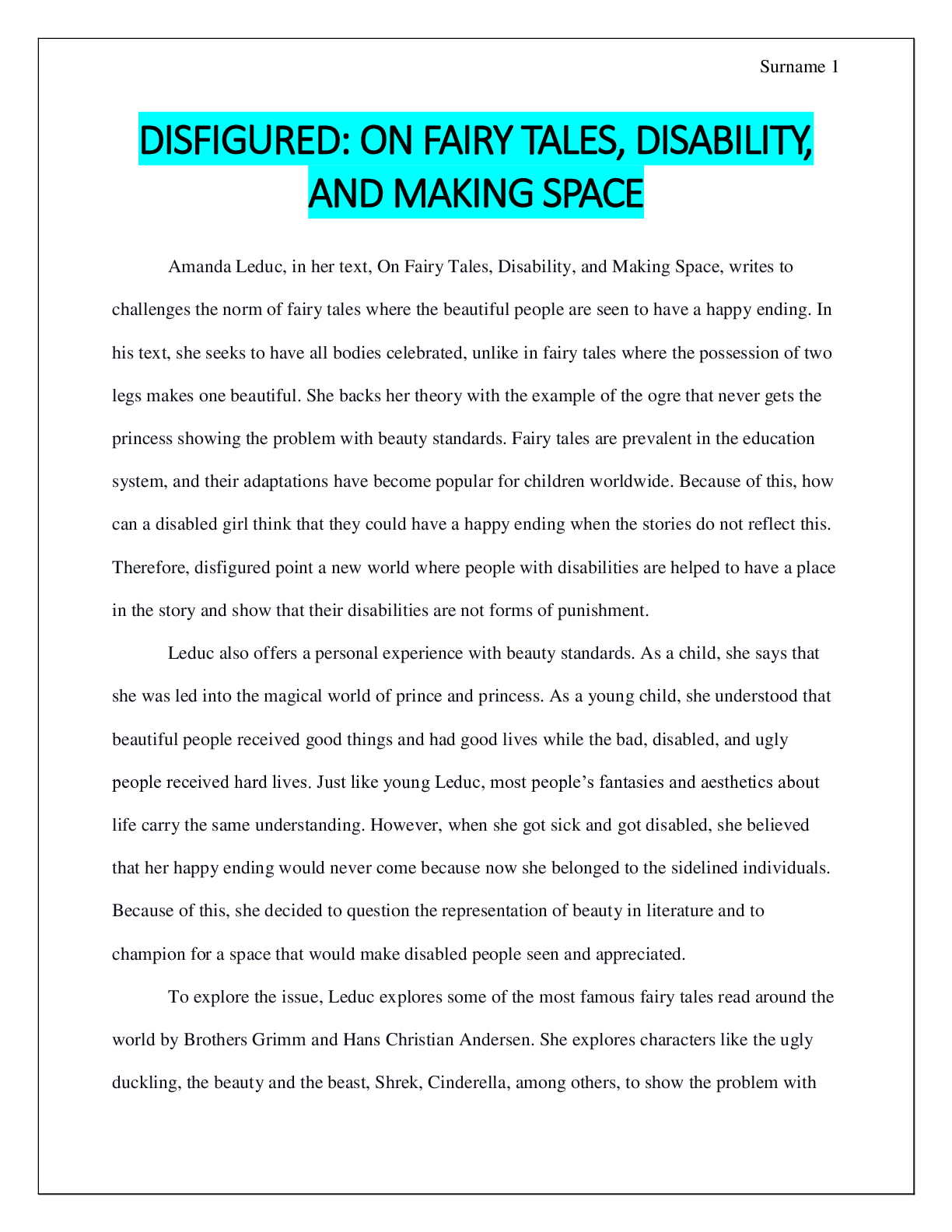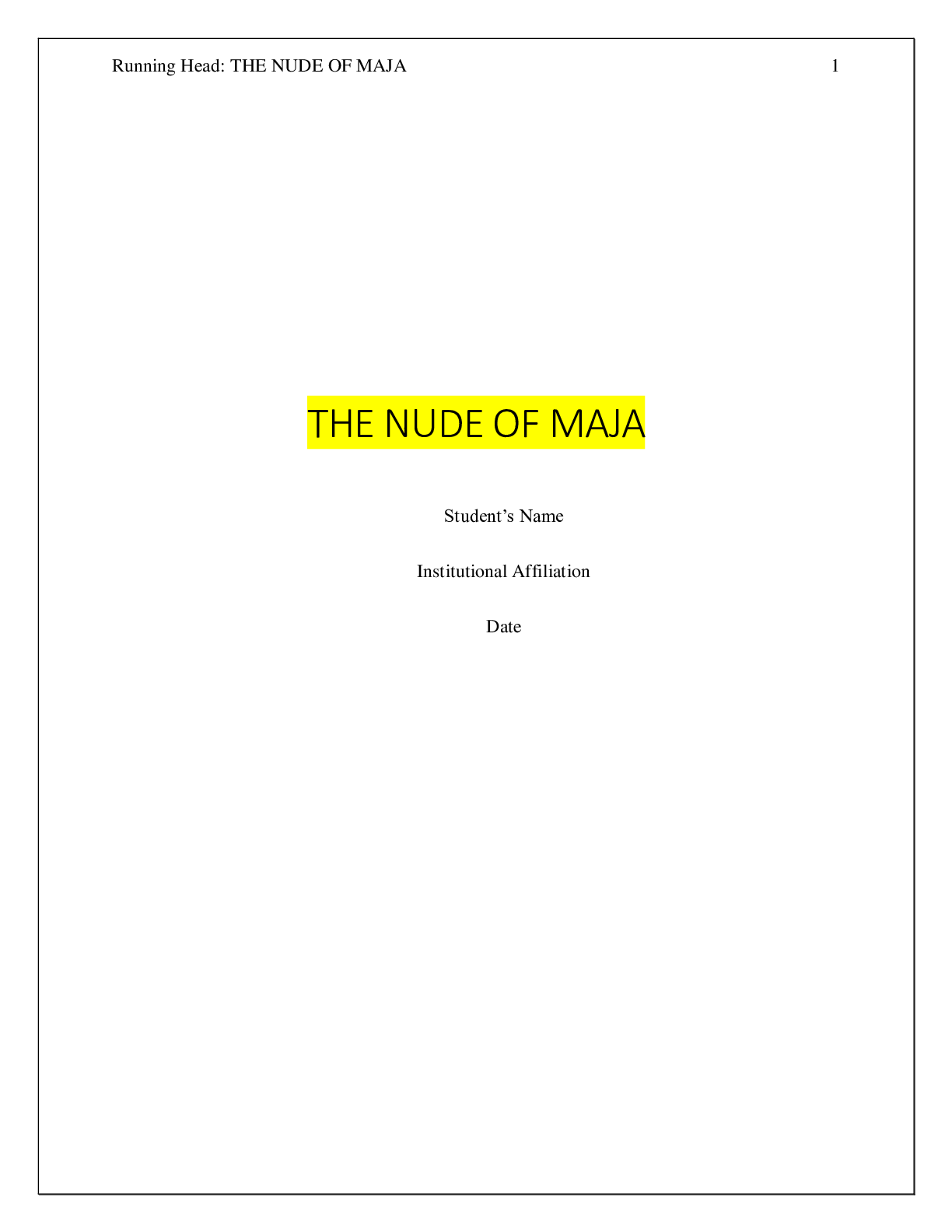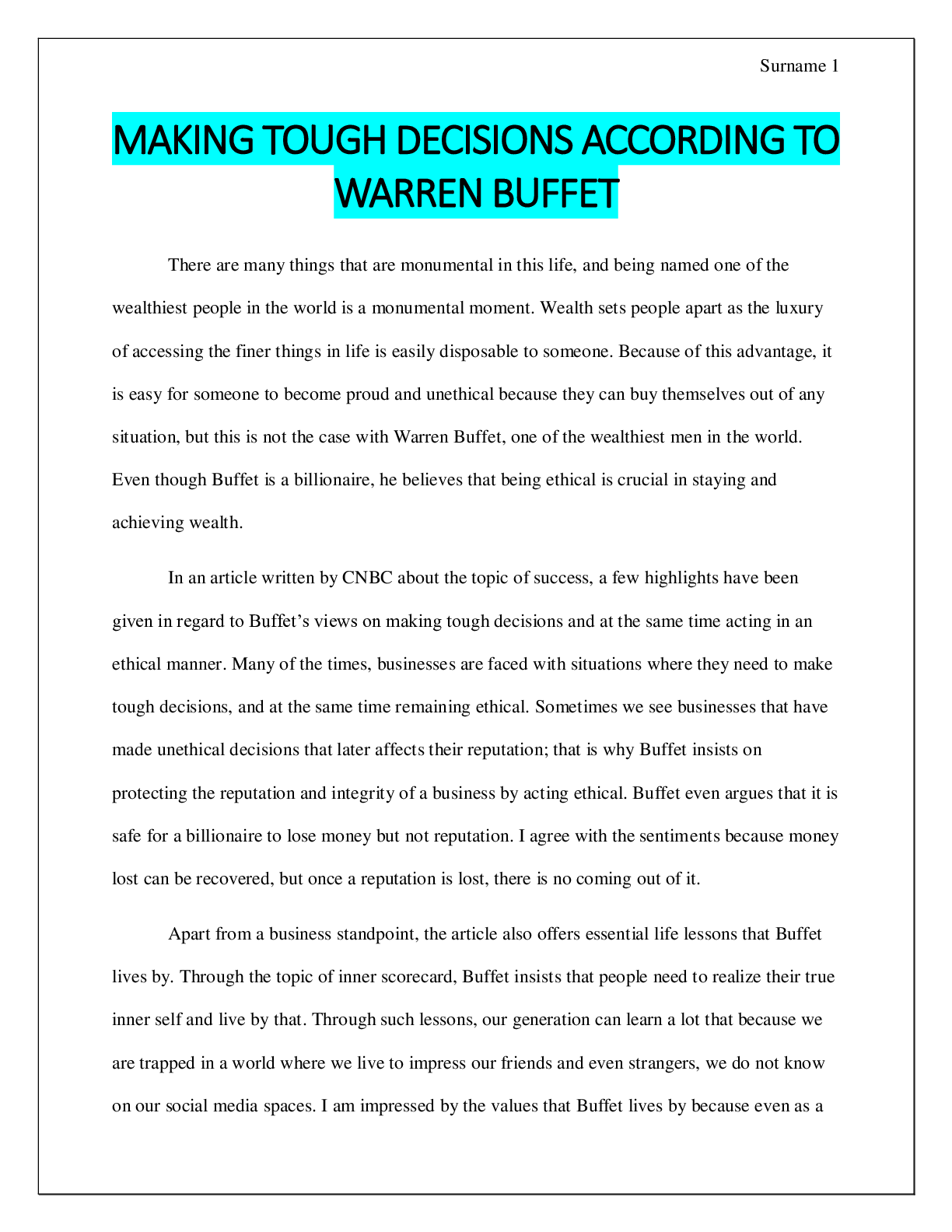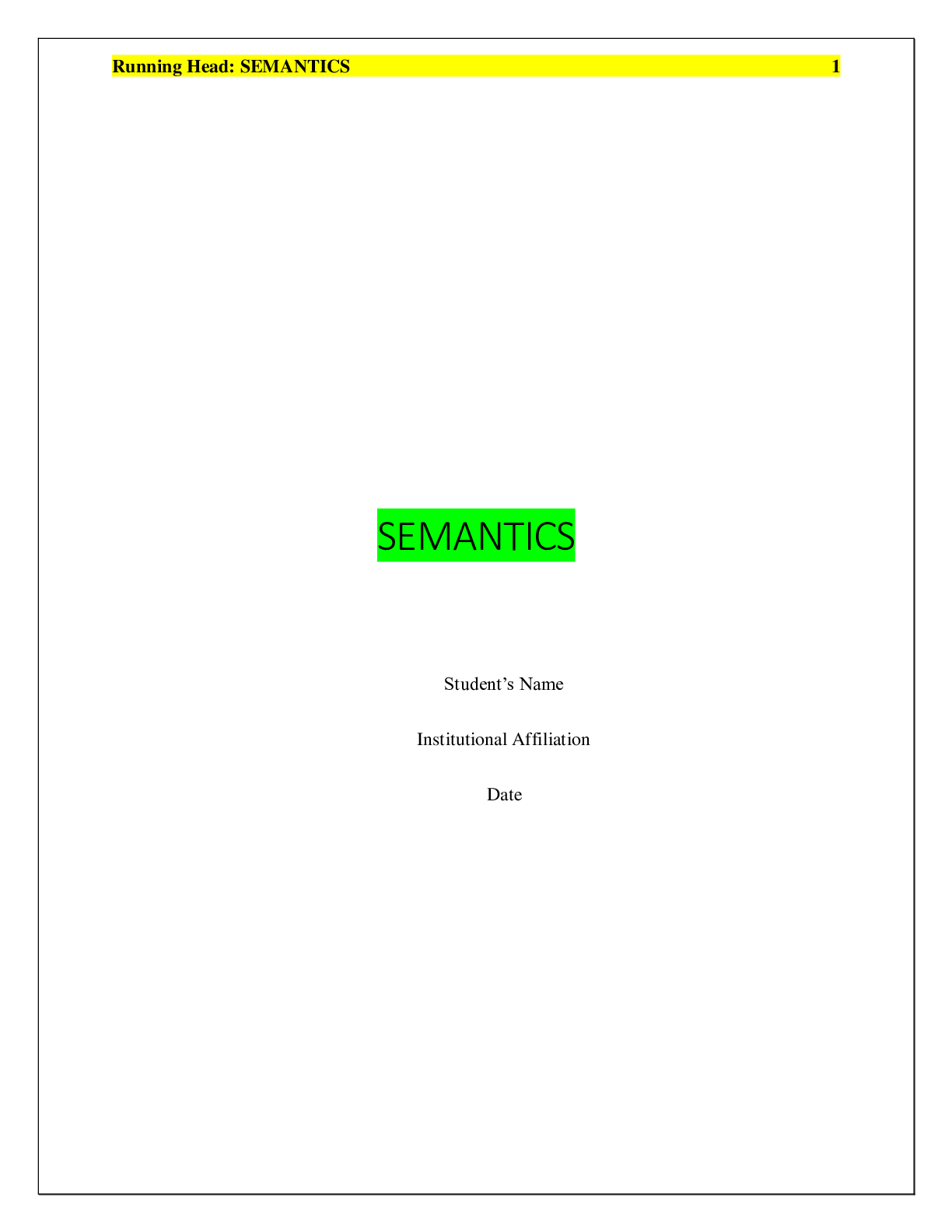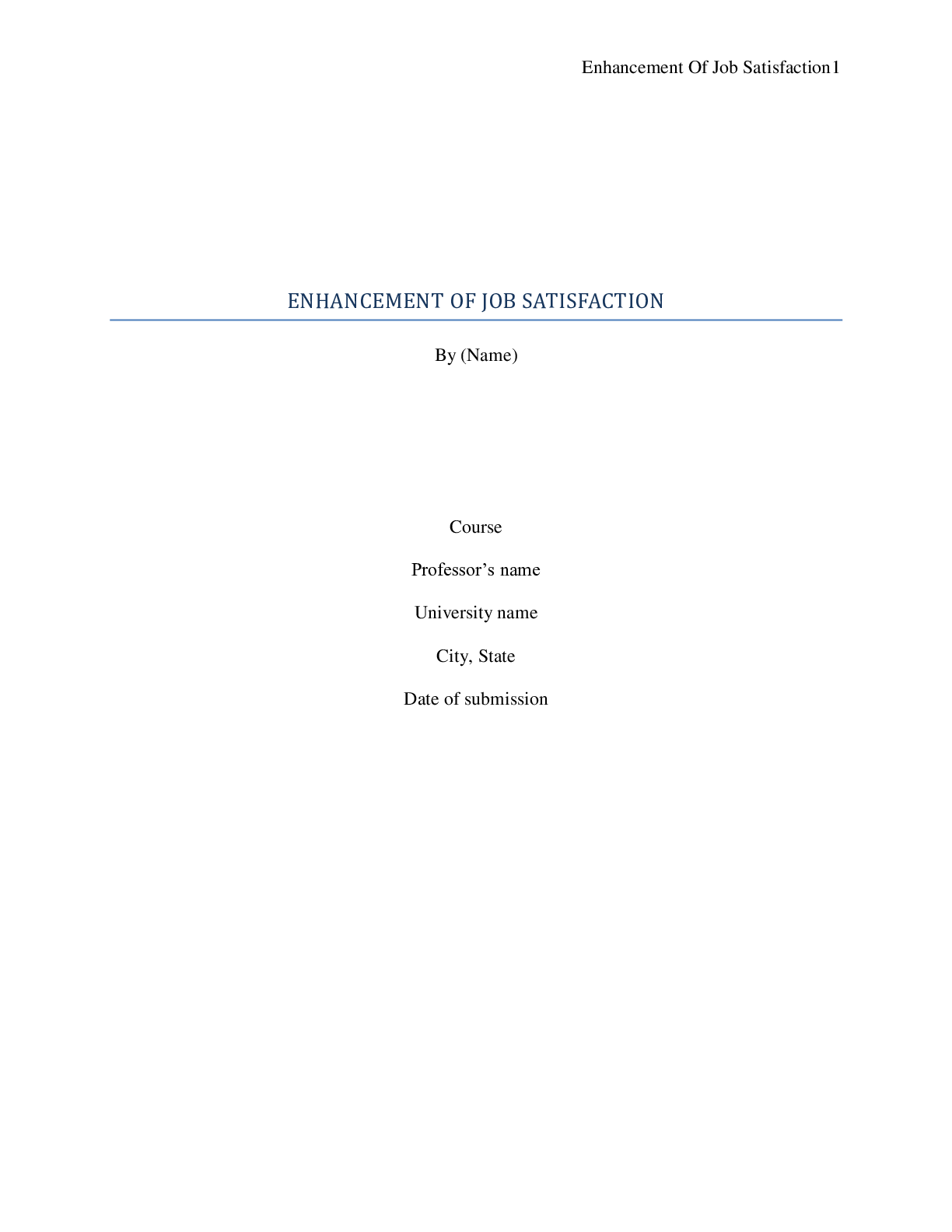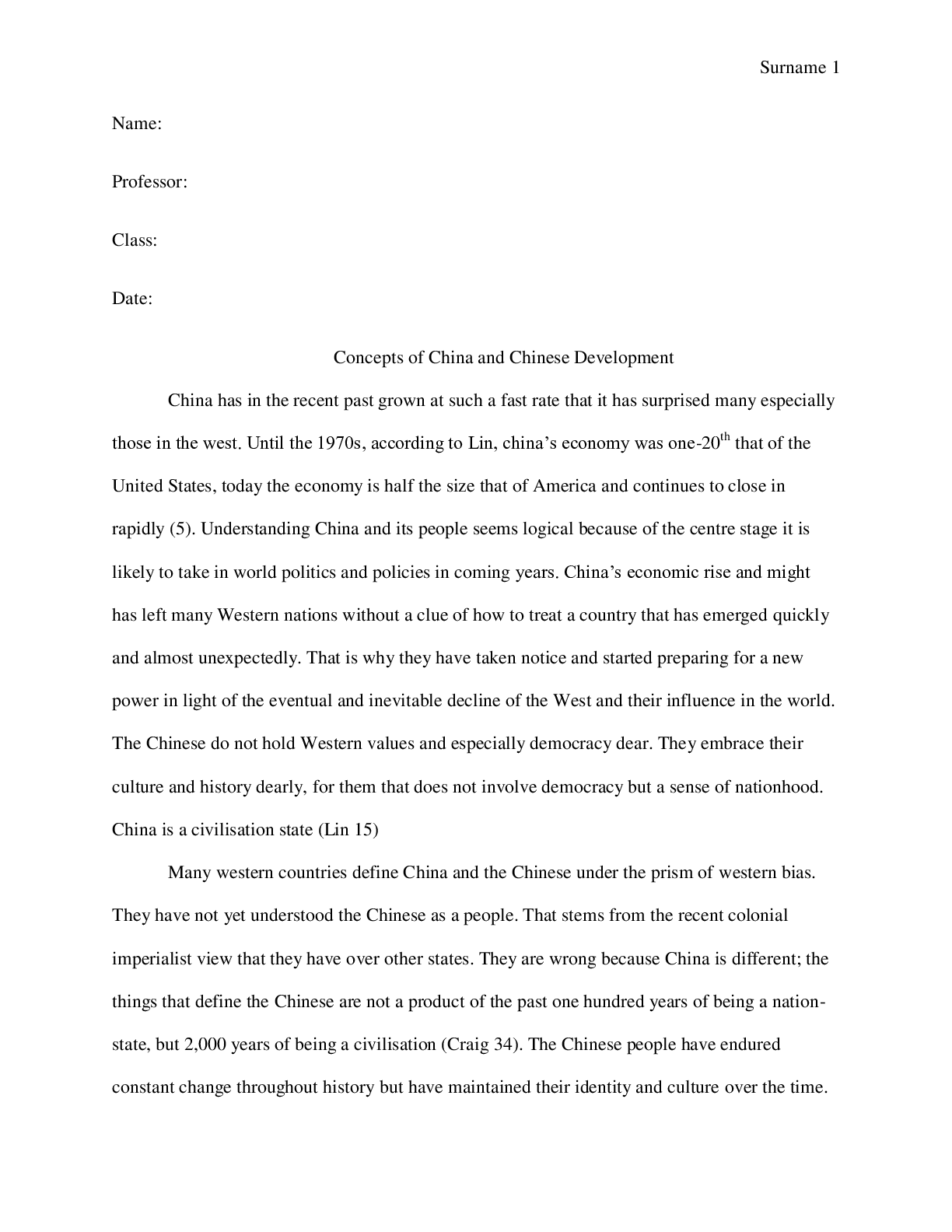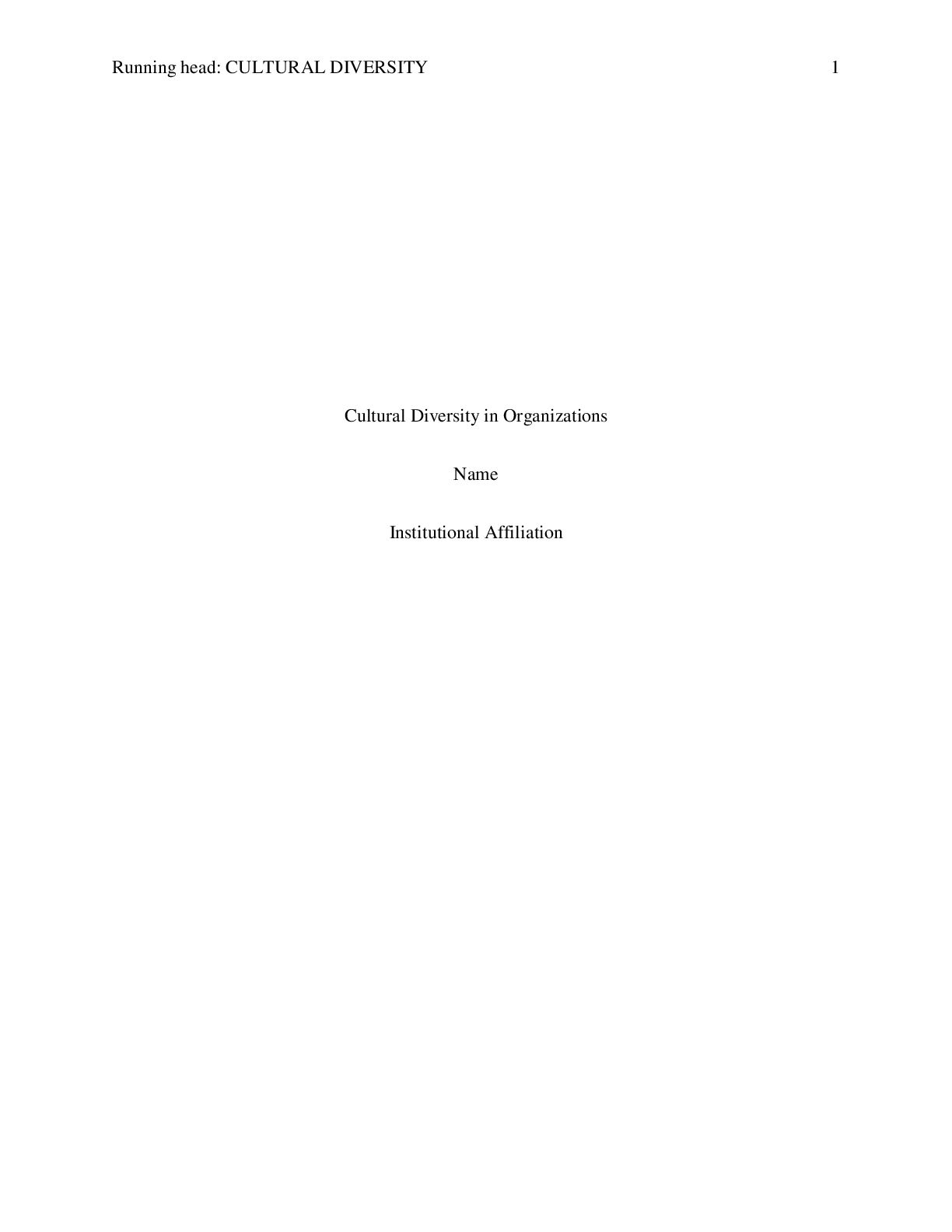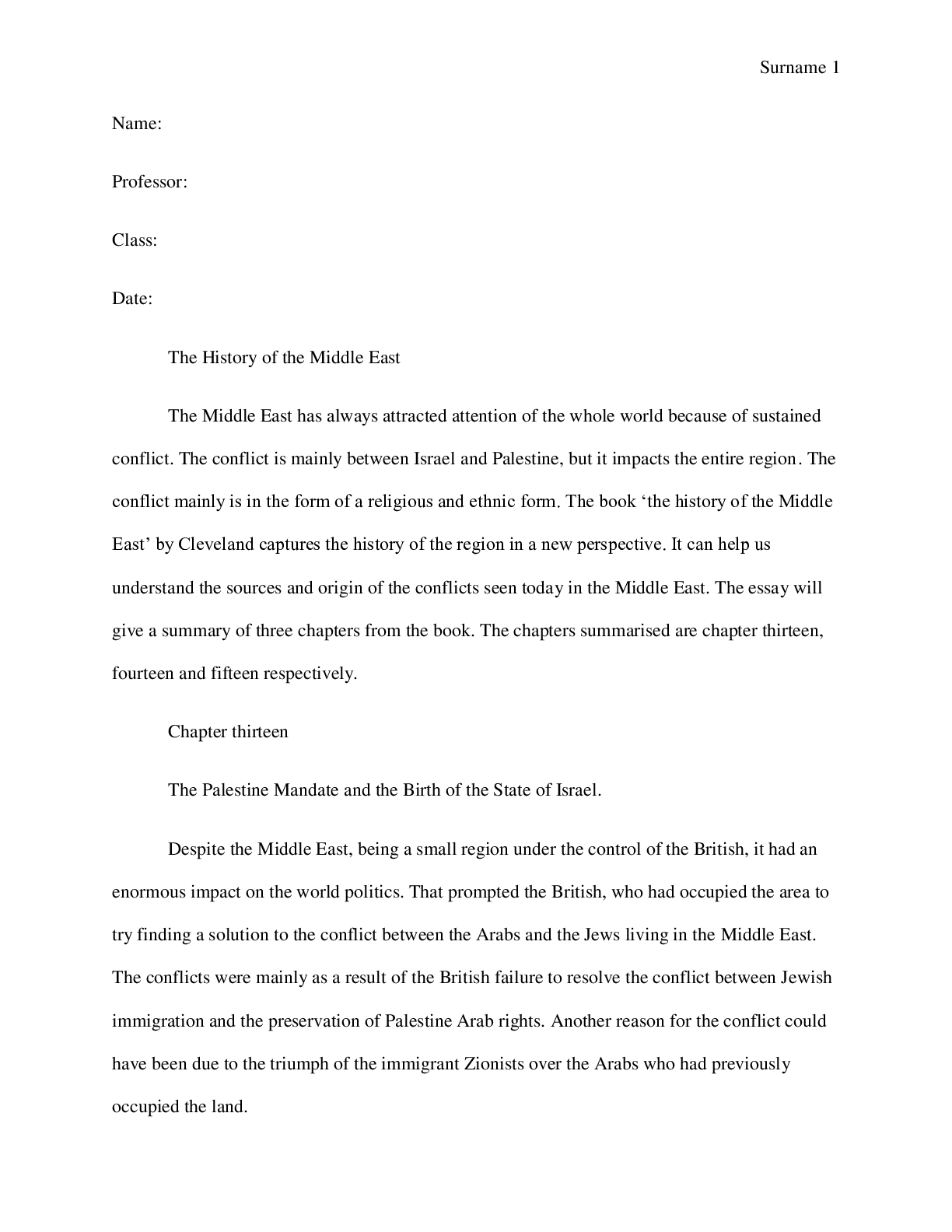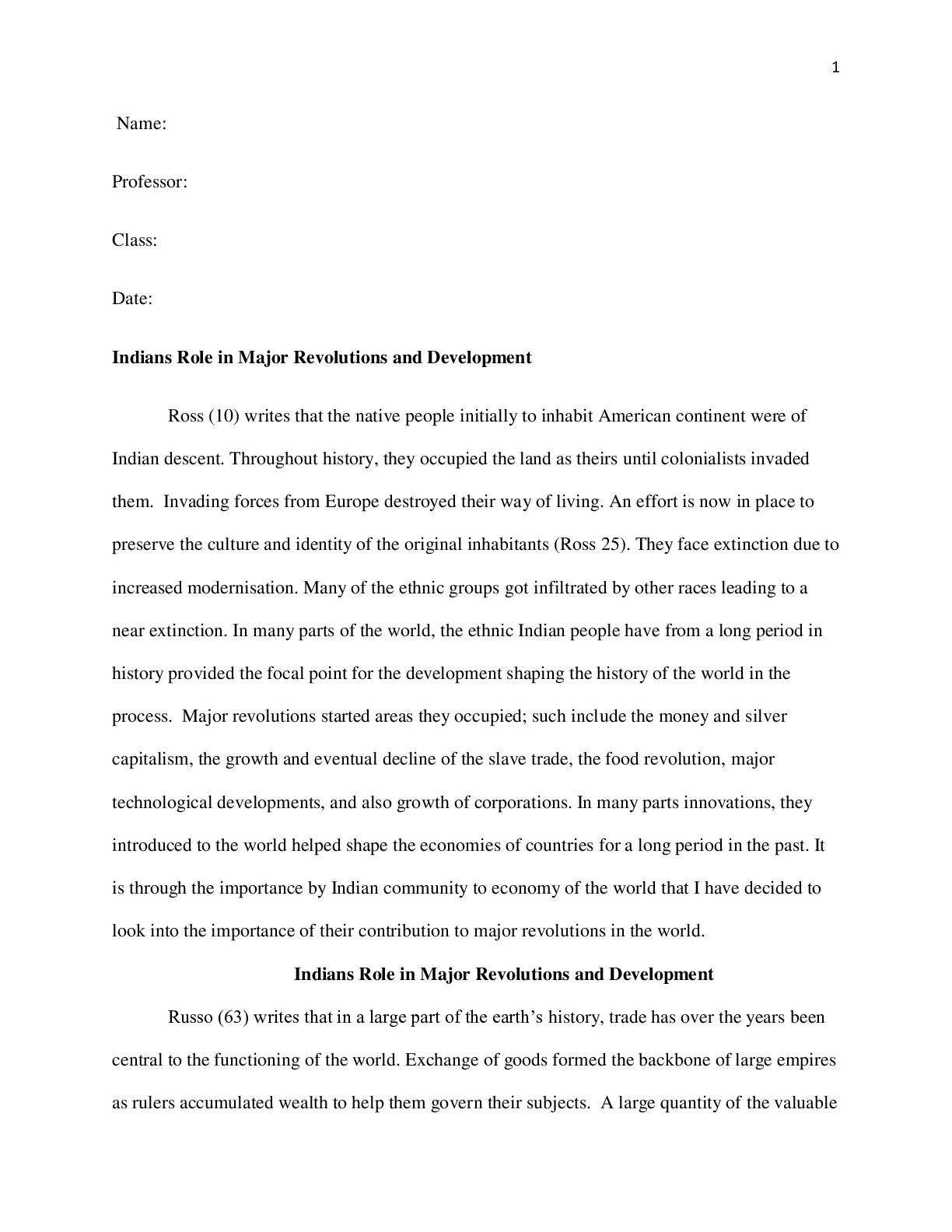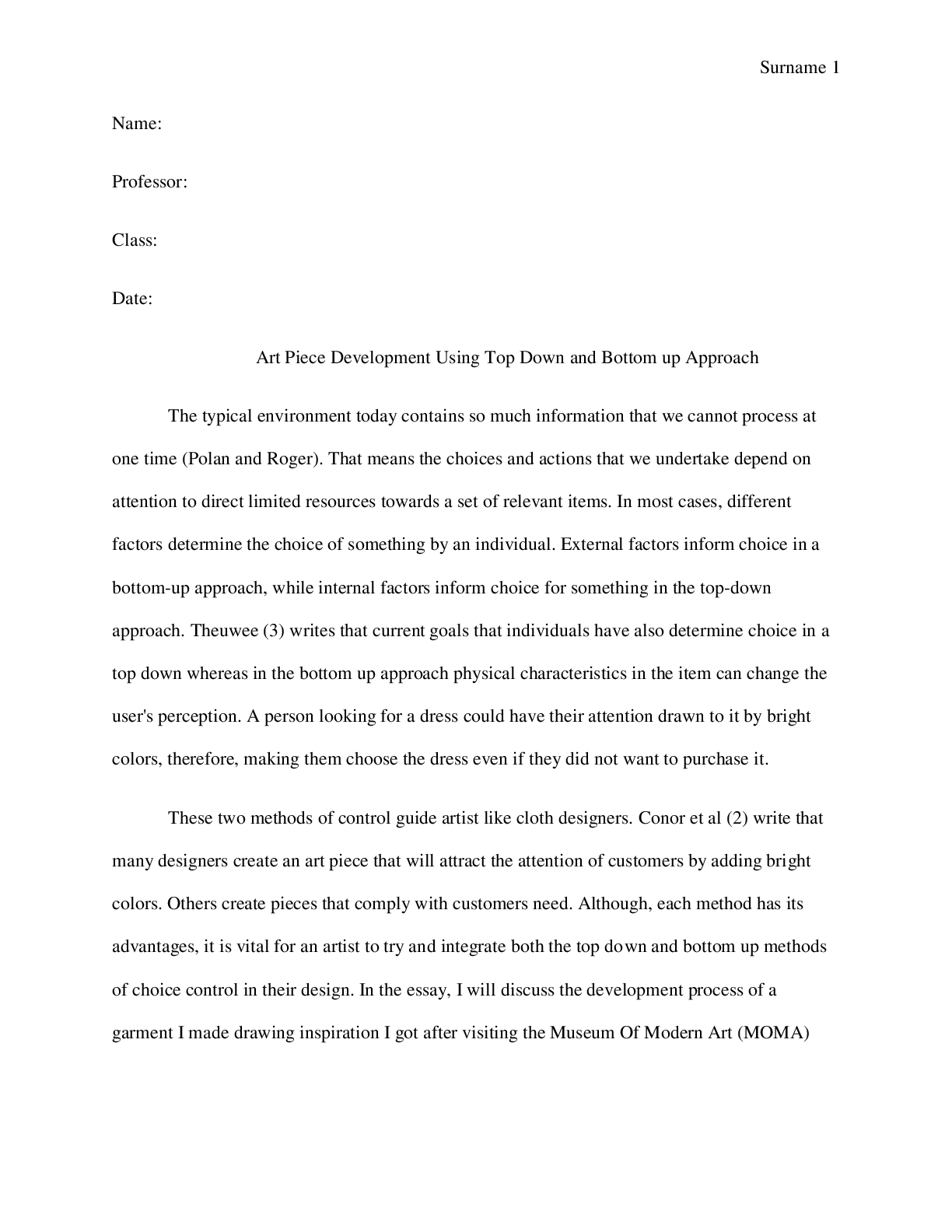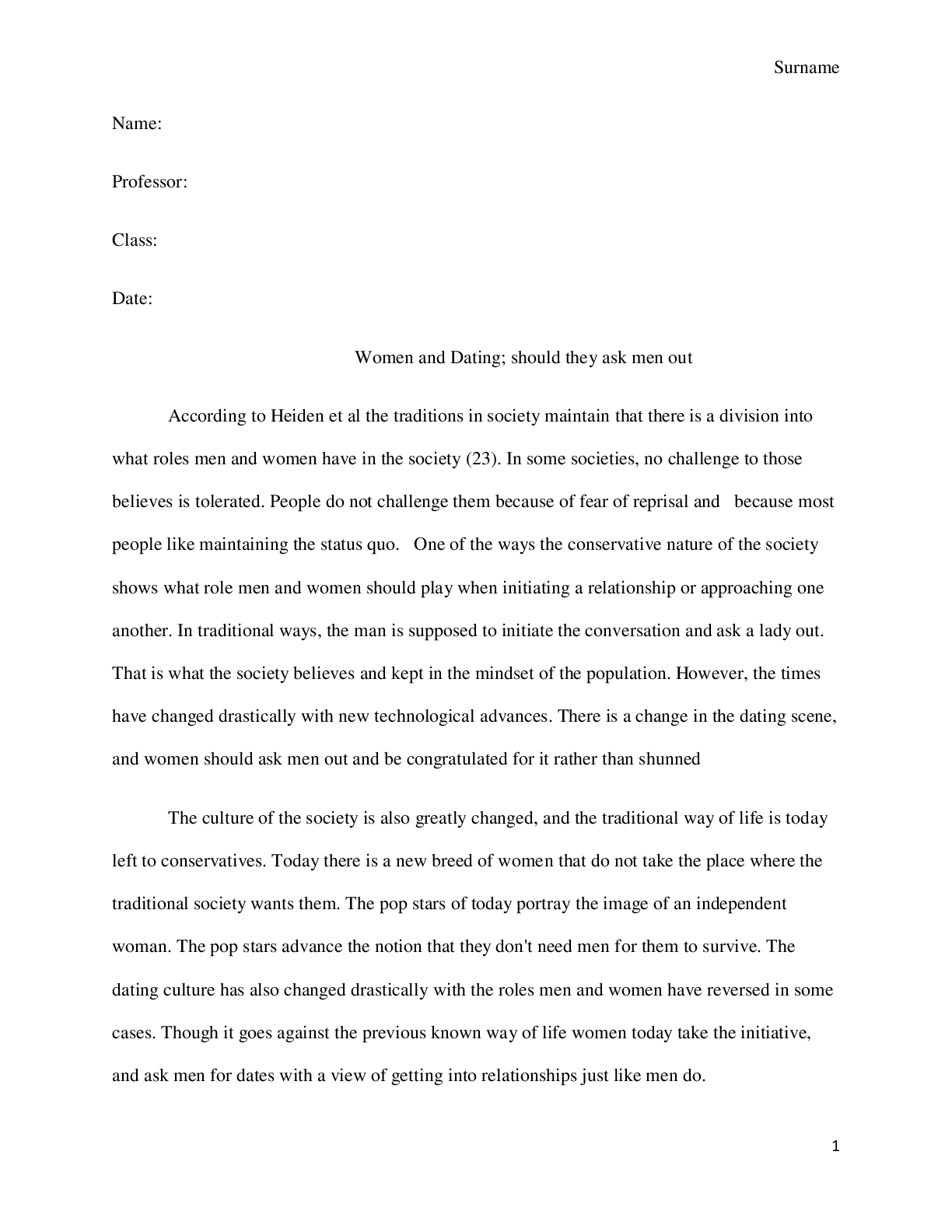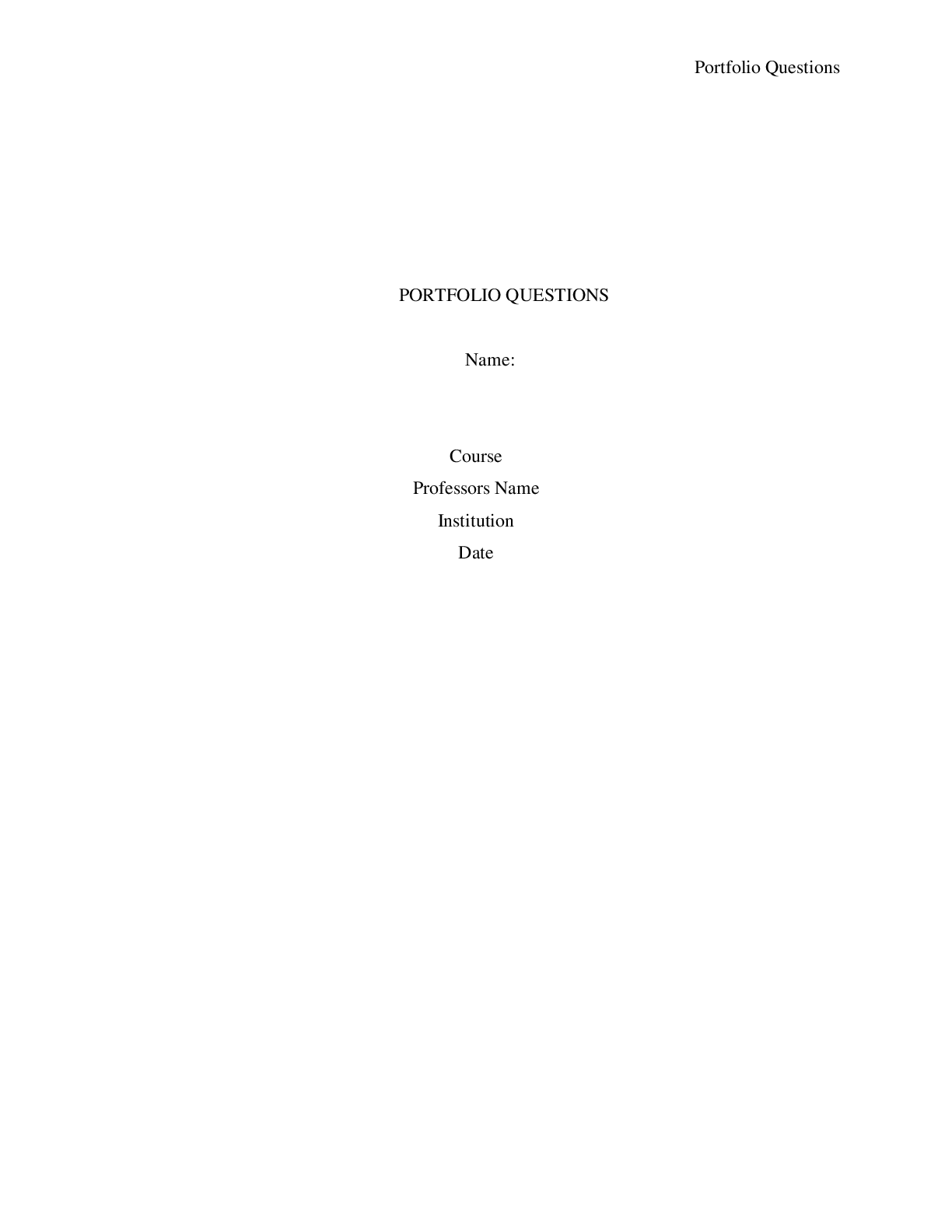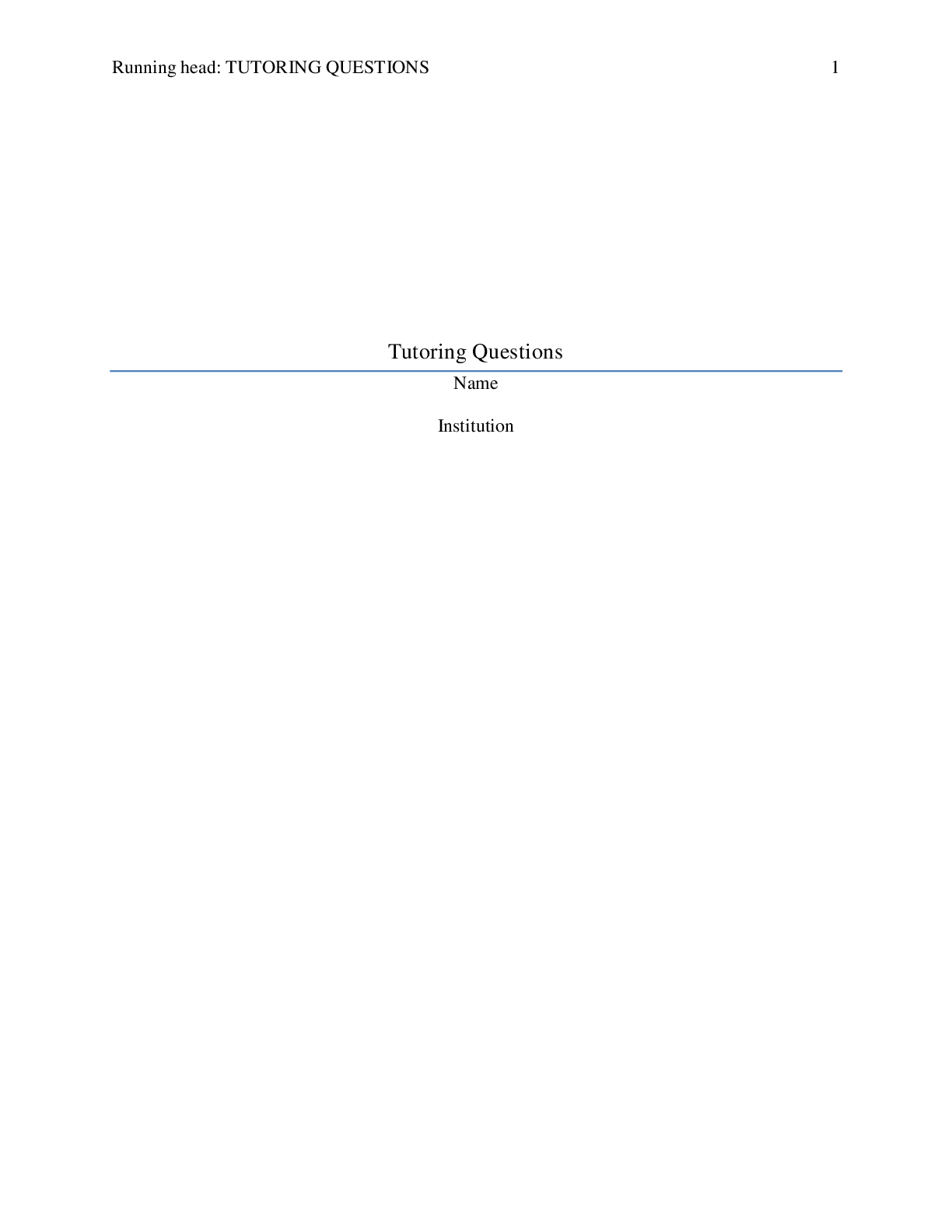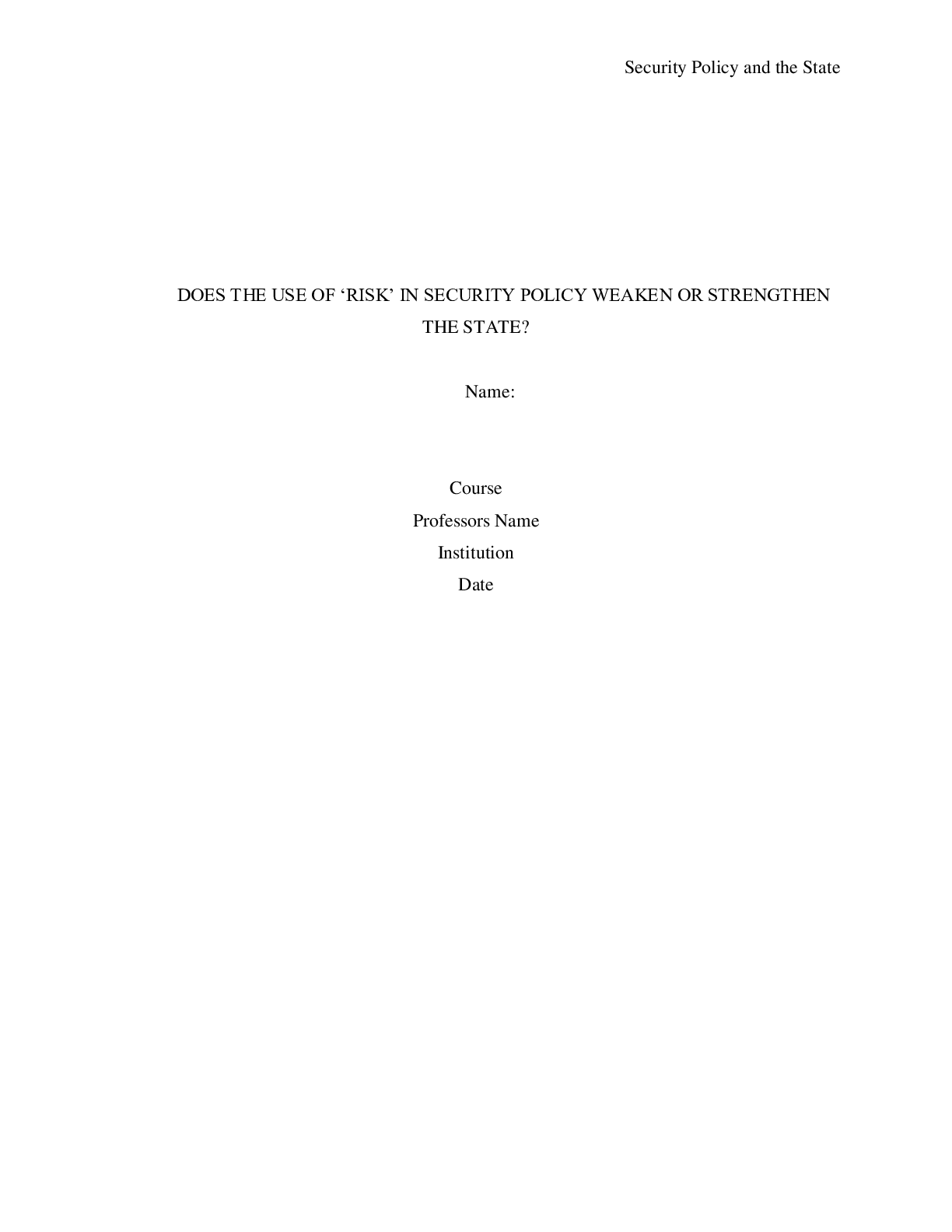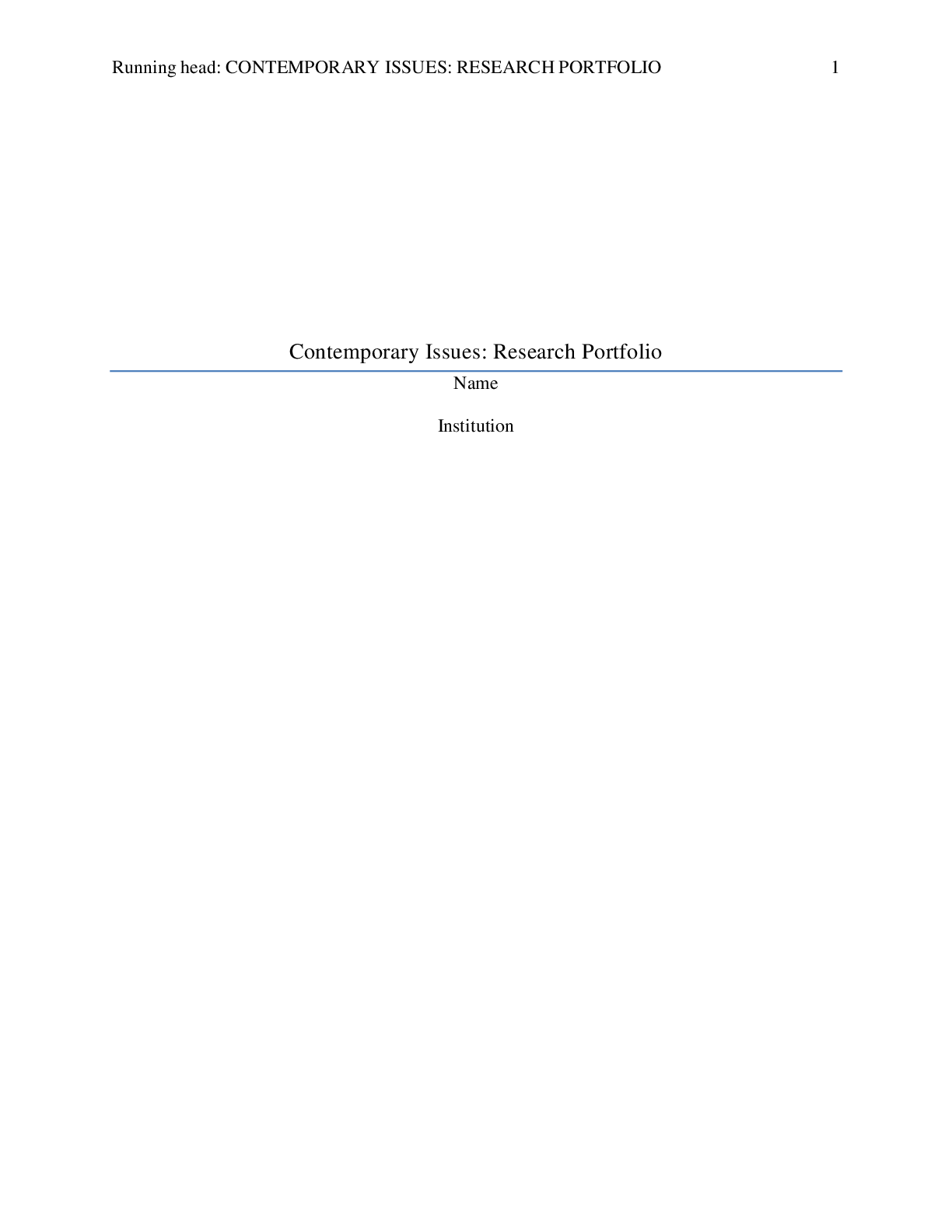Linguistics > ESSAY > LINGUISTICS: ROLES OF PSYCHOLOGICAL REALISM IN DAISY MILLER (All)
LINGUISTICS: ROLES OF PSYCHOLOGICAL REALISM IN DAISY MILLER
Document Content and Description Below
ROLES OF PSYCHOLOGICAL REALISM IN DAISY MILLER Henry James's short novel Daisy Miller looks into the thoughts of and souls of the characters to bring out their real feelings and imaginations. The nov... el revolves around the characters of Daisy Miller and Winterbourne and how they struggle to understand each other because of cultural differences. Henry represents Daisy as an innocent girl from America, while Winterbourne is a sophisticated gentleman from Europe. Winterbourne develops romantic feelings towards Daisy, but he is afraid that she is too flirtatious and not cultured enough for his cultural expectations. Psychological realism is a literal genre that explores why characters in a text behave the way they do (Flanagan et al., 24). Henry James is one of the authors that used psychological realism in his writing, and this is well represented in the text Daisy Miller. As a man, psychological realism allows Henry James to write from a female standpoint, and this allows a reader to have a good picture of Daisy's character. Therefore, psychological realism in the novella has been used to describe the complexities of morality expectations in European society and sexual challenges that women faced in the European community in the 19th century. The European society was rooted in moral standings, and therefore, a woman was expected to uphold ethical expectations. Readers rely on imagination to create a character in their mind, and through the description that Henry James gives Daisy Miller, she is represented as a very attractive young woman. Daisy is carefree, independent, a free thinker, and innocent, "Miss Daisy Miller looked extremely innocent James, 7". On the other hand, Winterbourne, is the normal representation of a European man. He is traditional and sophisticated, and this creates a difference between him and Daisy. Through the characterization, James creates the difference between Americans and Europeans. Winterbourne is amazed at how Daisy Miller carries herself, and he starts to doubt whether she is as innocent as she tries to display. In his mind, her actions do not seem to match her words. For example, when Daisy is telling Winterbourne of her previous dinners in New York, he is perplexed if that is the way American behave, "I have always had," she said, "a great deal of gentlemen's society James, 16." Through psychological awareness, Winterbourne starts getting aware of the character of American girls, they do not hold the moral standards of the European community. However, he does not want to believe that Daisy is not innocent, and his mind becomes conflicted. However, his conflicts end when he finds Daisy with Mr. Giovanelli. He cannot trust that she is as innocent as she portrays herself. Moral expectations in this society make Winterbourne aware of Daisy's character, and this shows that women in this society are expected to carry themselves in a particular way, where they maintain social boundaries with men. Men in European society have an easy pass in creating sexual relationships with women, and they do not receive any judgment. We see the thoughts that go through Winterbourne's head when he learns about Daisy's male encounters through psychological realism. At first, Henry James exposes Winterbourne's character where he has a relationship with an older woman, "he was extremely devoted to a lady who lived there—a foreign lady—a person older than himself." Henry James successfully shows us a character about Winterbourne; he is able to be involved in any type of woman (DING, 45). Winterbourne sees Daisy as a very mysterious person, and he wants to solve this mystery so bad that he is ready to hear what other people think about Daisy. The thoughts that are running through Winterbourne's mind are whether Daisy is involved in the men she talks to sexually. He seems to be particularly disturbed about Mr. Giovanelli, who is way older than Daisy. Through psychological realism, Henry shows the reader how Daisy views Mr. Giovanelli. She describes as a fun person to be around. To Winterbourne he sees that as a threat and fears she might be involved in him sexually. When he finds her with Mr. Giovanelli, he takes that as the last straw and concludes that Daisy is not innocent. Through this, we see that men have more sexual freedom than women. Daisy had not done anything sexual with Mr. Giovanelli, but he could not hold the thought of her with another man. Winterbourne forgets he himself was sexually involved with an older woman, and therefore double standards highly apply in European society. Even though psychological realism has been used in the novella to display the complexities of morality and sexual challenges in European society, the text could be interpreted otherwise in the way Daisy Miller conducted herself. Henry James tries to paint Daisy as an innocent girl, but the way he represents her character is questionable. It is hard for a reader to see her innocence when she keeps on flirting with men and hanging out with men. It is hard to believe that Daisy sees it fit for her to hang out with Mr. Giovanelli, an older man. Her character does not sufficiently support the psychological realism that Henry James is trying to achieve. As a reader, we do not see her thought process when she makes decisions as Winterbourne represents it. For Winterbourne, we see the thoughts that go through his head, but for Daisy, the author just makes narrations about Daisy. Psychological realism is therefore not well represented by the character of Daisy. Conclusively, psychological realism has successfully been used in the novella Daisy Miller to explore the issues in European society. Through the characters of Daisy Miller and Winterbourne, the novella gives readers a reason to focus on the characters' internal thoughts. The role of psychological realism in the book has therefore shown the struggle of women in society in maintaining moral expectations and sexual challenges that are expected in this community. Women have no moral right to engage with other men, while men have the freedom to engage in sexual relations. Daisy Miller America roots put her in very bad situations, and society judges her very harshly. Therefore, psychological realism is an essential genre in this literal text. Work Cited DING, Yan, Pei-yu CHEN, and Xiu-li DING. "The Impressionistic Features of Daisy Miller." Overseas English (2011): 05. Flanagan, Owen J., and Owen J. Flanagan. Varieties of moral personality: Ethics and psychological realism. Harvard University Press, 2009. James, Henry. Daisy miller. Vol. 4. Broadview Press, 2011. [Show More]
Last updated: 1 year ago
Preview 1 out of 5 pages
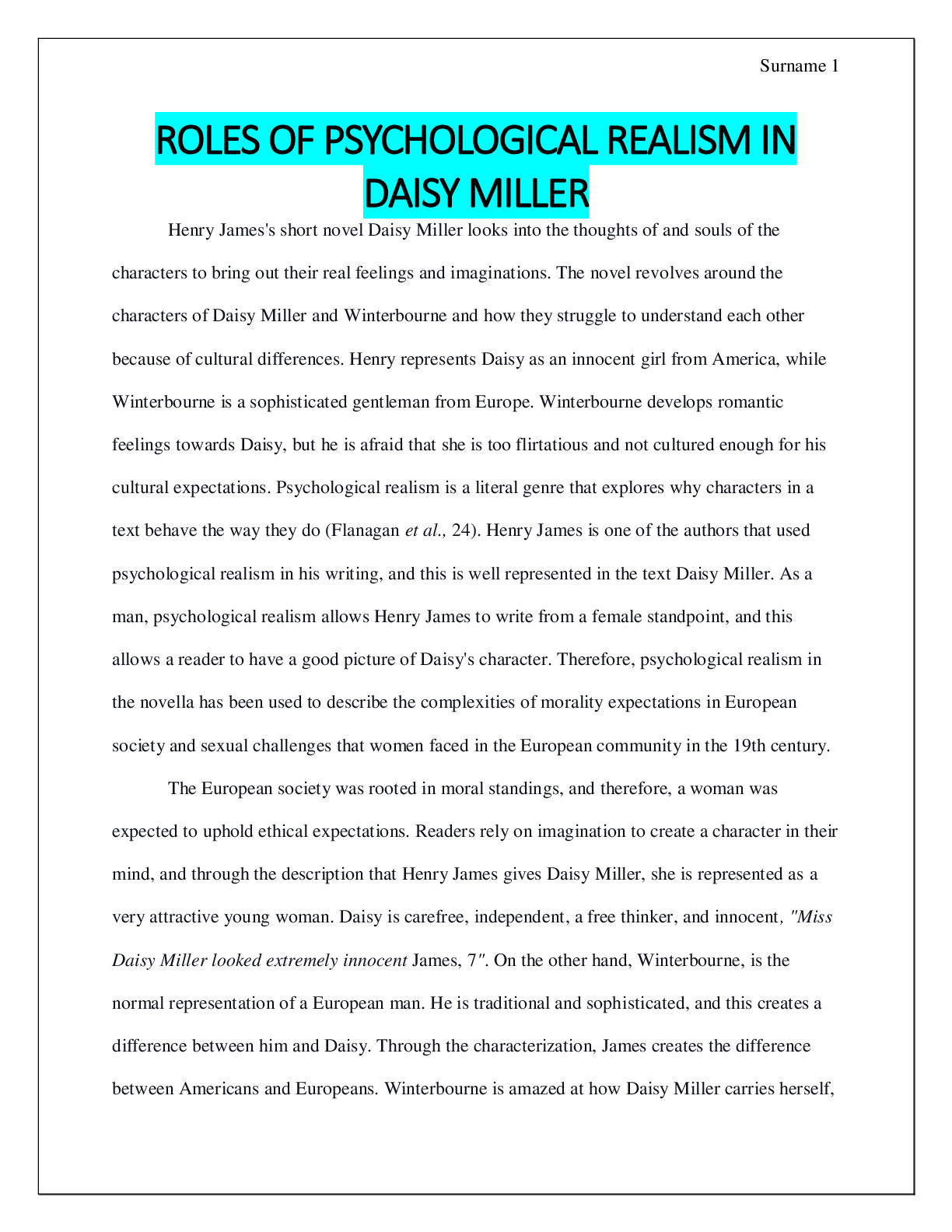
Reviews( 0 )
Document information
Connected school, study & course
About the document
Uploaded On
Sep 16, 2021
Number of pages
5
Written in
Additional information
This document has been written for:
Uploaded
Sep 16, 2021
Downloads
0
Views
90


